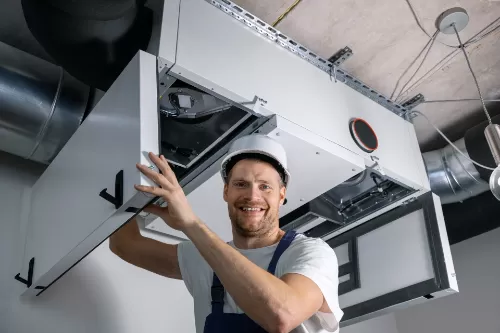5 Steps to Master Your HVAC System: A Guide from Selection to Maintenance
HVAC systems (Heating, Ventilation, and Air Conditioning) play a crucial role in modern homes. Whether it's the cold winter or the hot summer, an efficient HVAC system can provide a comfortable indoor environment. This article will guide you step-by-step on how to choose, install, use, and maintain your HVAC system, offering practical advice in line with current US energy efficiency trends and climate change. Whether you need to find reliable heating and air companies or understand home air conditioning repair services, this article has got you covered.

Basics of HVAC Systems
HVAC systems are key to regulating indoor temperature, humidity, and air quality. They consist of three main components: heating systems (e.g., furnaces), ventilation systems, and air conditioning systems. Common types include central air, split systems, and heat pumps. Central air is suitable for large homes, while split systems are better for smaller spaces. Heat pumps are an energy-efficient option, especially for temperate climates.
How to Choose the Right HVAC System
Choosing the right HVAC system requires considering several factors. First, select a system type based on your home size and local climate. For example, in hot Austin (Austin Hvac), high-efficiency AC systems are essential. Second, choosing a reliable heating and air company ensures high-quality equipment and services. Finally, pay attention to SEER ratings and energy efficiency labels, as high-efficiency systems can significantly reduce energy consumption and utility bills.
Installation and Setup of HVAC Systems
Before installation, ensure your home’s insulation and ventilation are in good condition. Professional installation guarantees optimal performance and energy efficiency. After installation, set your thermostat based on your family’s schedule for maximum energy savings. For example, set a higher temperature when no one is home during the day and lower it when you return.
Daily Use and Maintenance of HVAC Systems
In daily use, avoid frequent thermostat adjustments to reduce system strain. Regular maintenance is key to extending equipment life. For example, replacing filters monthly can significantly improve system efficiency. Additionally, regularly clean condensers and check refrigerant levels. If you’re unfamiliar with these tasks, contact a professional HVAC maintenance service .
Common Issues and Troubleshooting
HVAC systems can experience various issues, such as insufficient cooling or a furnace that won’t start. If your AC isn’t cooling effectively, you may need home air conditioning repair services. If your furnace is making unusual noises or won’t start, you may need furnace repair services. Addressing issues promptly can prevent larger problems.
Advanced Tips and Optimization
Smart thermostats can automatically adjust temperatures based on your habits, further enhancing efficiency. For example, set a higher temperature while at work and lower it before returning home. Seasonal maintenance is also important. Before summer, check your AC system to ensure it’s in top condition. Before winter, inspect your furnace and ventilation system to ensure proper heating.
Regional Recommendations (Austin Example)
Austin’s hot summers make high-efficiency AC systems essential. Regular maintenance and proper usage can help you cope with extreme heat. For example, regularly clean AC filters and condensers to improve cooling efficiency. Additionally, choose HVAC systems suited to the local climate, such as heat pumps, to ensure comfort while reducing energy consumption.
Conclusion
With this guide, you can better choose, install, use, and maintain your HVAC system, ensuring a comfortable and energy-efficient home environment. Whether you need to find reliable heating and air companies or understand home air conditioning repair services , this article provides practical advice. We hope this information helps you master your HVAC system and enjoy a comfortable indoor environment.

